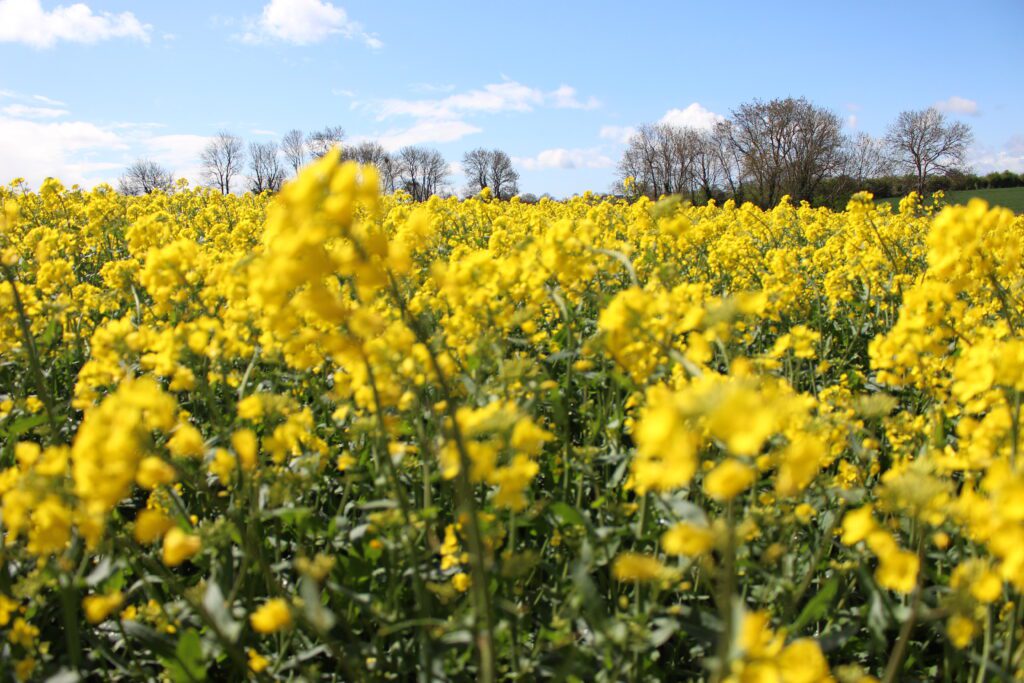Despite the challenging weather, approximately 20,000ha of winter oilseed rape (WOSR) have been harvested over the past few weeks. This is double the figure attributed to the crop in Ireland just two years ago.
So the question now becomes – can the momentum behind oilseed rape be maintained in 2023/2024?
One fundamental obstacle to the planting of most rape crops currently, is the presence of un-baled straw in many fields.
But, hopefully, the dry days forecast this week will allow farmers to tackle this issue in a timely manner.
Oilseed rape
At a time when tillage crops have been in decline, WOSR has become extremely popular with farmers for a number of reasons, according to Teagasc.
It is not just the more reliable varieties that are now available which help to improve the profit margins.
The other benefits, including spreading the workload, soil structure improvements and grassweed control, have also helped to increase its popularity.
Again in 2023, many growers were able to reduce the amount of nitrogen (N) required to grow the crop, by measuring the green area index (GAI) of the crop in early spring.
This was a significant saving, given the cost of fertilisers. Early drilling is essential for growing oilseed rape.
August-drilled crops generally perform better than September-drilled ones, and it may be easier to prevent pigeon grazing of large canopies, which in turn will reduce the amount of N needed.
The sowing window for WOSR kicks in over the coming days and continues through until the middle of September.
Seeding
While early planting is strongly advised, the creation of a fine seed bed is equally important.
Teagasc is advising farmers to peruse the Department of Agriculture, Food and the Marine (DAFM) recommended list, when it comes to choosing the most relevant varieties to plant.
The recommended seeding rate for WOSR is in the range 60-80 seeds/m2 to establish 30-50 plants/m2 in the spring.
Varietal differences in vigour, thousand seed weight, along with seedbed conditions and sowing date must be accounted for. Poor seedbeds and later sowing will need higher (10%) seeding rates.
Weed control
Where weed control is concerned, field history is important as pre-emergent weed control is still the most effective.
Volunteer cereals, cleavers and grassweeds are the main competitive weeds and do most damage early in the crop’s growth.

Growers should apply pre-emergence or early post-emergence treatments. Options include Butisan S/Rapsan 500 (1.5L/ha) or Katamaran Turbo (2.0-2.5L/ha) within 48 hours of sowing.
Graminicides such as Falcon, Fusilade, etc., can also be used to control grassweeds, while Astrokerb will give control of broadleaf and grassweeds later in the season.
Clearfield WOSR varieties offer an opportunity to grow oilseed rape in fields where brassica weeds such as charlock, hedge mustard, etc., are a problem.
The herbicide Cleranda is specially developed for Clearfield varieties and not only does it control charlock, it also controls groundsel, fumitory, poppy and speedwells. However, Cleranda can only be used on Clearfield hybrid varieties.
One area of concern that has appeared in some crops over the last two years is clubroot. There have been a number of reports of the disease in crops around the country.
This can usually be traced back to poor rotation or the intensive use of brassica cover crops in schemes such as the Green Low-Carbon Agri-environment Scheme (GLAS).
Clubroot is a soilborne disease that lives on hosts such as volunteer rape plants, brassica weeds, or weeds such as shepherd’s purse, according to Teagasc.
To avoid the problem, growers should keep rotations as wide as possible and avoid the use of brassica catch crops.
